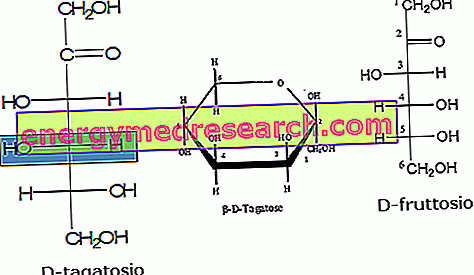REACTINE ® is a drug based on Cetirizine dihydrochloride + Pseudoephedrine hydrochloride
THERAPEUTIC GROUP: Antihistamines for systemic use - H1 antagonist
IndicationsAction mechanismStudies and clinical effectiveness Usage and dosage instructionsWarnings Pregnancy and lactationInteractionsContraindicationsUndesirable effects
Indications REACTINE ® - Cetirizine
REACTINE ® is indicated in the treatment of symptoms typical of allergic pathologies and in particular rhinitis, characterized by nasal hypersecretion, nasal and ocular itching, lacrimation and upper airway congestion.
Mechanism of action REACTINE ® - Cetirizine
REACTINE ® is a medicinal specialty widely used in a clinical setting, due to its excellent therapeutic properties due to the presence of two different active ingredients and characterized by complementary biological mechanisms.
More precisely :
- Cetirizine, is a second generation H1 receptor antagonist antihistamine, and therefore has pharmacokinetic properties such as to optimize therapeutic action by reducing both the vascular permeability induced at the level of the penivenular capillaries, and the typical bronchospasm linked to the activation of histaminergic receptors present on the smooth muscles, while controlling the sedating action at the central level.
- Pseudoephedrine, on the other hand, is an active ingredient with sympathomimetic activity which, by exerting a vasoconstrictive action at the nasal level, reduces mucosal edema, reducing nasal congestion and restoring the airway patency.
Taken for os REACTINE ® performs its therapeutic action in a few minutes, keeping it active for several hours, thus guaranteeing the administration at the most every 12 hours.
The elimination of both active ingredients is mainly carried out via the kidneys.
Studies carried out and clinical efficacy
THE GREAT EFFECTIVENESS OF THE ASSOCIATION BETWEEN CETIRIZINE AND PSEUDOEFEDRIN
Int J Clin Pharmacol Ther. 2009 Feb; 47 (2): 71-7.
Study demonstrating that the association between pseudoephedrine and Cetirizine may be more effective in the treatment of allergic rhinitis and its respiratory symptoms, compared to the antihistamine alone taken as monotherapy.
CETIRIZINE / PSEUDOEFEDRIN IN ASMATIC PATIENTS
Ann Allergy Asthma Immunol. 2006 Sep; 97 (3): 389-96.
Clinical trial conducted on 274 patients with asthma who demonstrate that treatment with Cetirizine and Pseudoephedrine can significantly improve the clinical conditions of these patients during the overlap of allergic manifestations such as seasonal allergic rhinitis.
THE EFFECTIVENESS OF CETIRIZINE / PSEUDOEFEDRINA
Arzneimittelforschung. 2001 Nov; 51 (11): 904-10.
Study demonstrating that the association between Cetirizine and Pseudoephedrine is more effective than the intake of sympathomimetics in spray, considerably reducing nasal secretions, hence the relative congestion.
Method of use and dosage
REACTINE ®
Effervescent tablets of 10 mg of Cetirizine dihydrochloride;
Extended release tablets of 5 mg Cetirizine dihydrochloride + 120 mg of Pseudoephedrine hydrochloride.
Generally, therapy with REACTINE ® should include in adults the intake of two tablets a day, spaced 12 hours apart, to be taken morning and evening preferably between meals without chewing.
Treatment should not exceed 2-3 weeks; should symptoms persist it would be advisable to consider a different therapeutic option with your doctor.
In any case it is recommended to consult your doctor before starting to use REACTINE ®.
Warnings REACTINE ® - Cetirizine
Before undertaking the use of REACTINE ® it would be advisable to consult your doctor in order to assess the possible presence of conditions that are potentially incompatible with the therapy.
In fact patients suffering from diabetes, hypertension, cardiovascular pathologies or subjected to simultaneous therapy with sympathomimetics should take this drug with particular caution and under strict medical supervision.
REACTINE ® contains lactose, therefore its intake is generally not indicated in patients with lactase enzyme deficiency, glucose-galactose malabsorption syndrome, galactose intolerance.
Keep the medicine out of the reach of children.
PREGNANCY AND BREASTFEEDING
The ability of pseudoephedrine and Cetirizine to cross the placental barrier and the breast filter, exposing themselves in significant quantities both to the fetus and to the infant, extend the aforementioned contraindications to the use of REACTINE ® also to pregnancy and the subsequent period of breastfeeding.
Interactions
Patients taking REACTINE ® should be especially cautious with alcohol and other active ingredients that can increase the risk of adverse reactions associated with the use of Cetirizine.
At the same time Pseudoephedrine could enhance the effects of other sympathetic mimetic drugs and inhibit the antihypertensive effects of other active ingredients.
If it becomes necessary to take other medicines, during therapy with REACTINE ®, it would be necessary to consult your doctor first.
Contraindications REACTINE ® - Cetirizine
The use of REACTINE ® is contraindicated in case of hypersensitivity to the active ingredient or to one of its excipients or to other structurally related molecules, in patients suffering from severe hypertension or cardiovascular pathologies or contextually subjected to therapy with monoamine oxidase inhibitors and contextually characterized by increased intraocular pressure and urinary retention.
Undesirable effects - Side effects
Therapy with REACTINE ® may expose the patient to side effects such as: tachycardia, dry mouth, nausea, asthenia, weakness, dizziness, headache, dizziness, drowsiness, nervousness and insomnia.
The most clinically relevant side effects such as hypertension, the appearance of dermatological reactions due to hypersensitivity to the drug, changes in liver function and breathing difficulties are decidedly more rare.
Note
REACTINE ® is a non-prescription drug.



